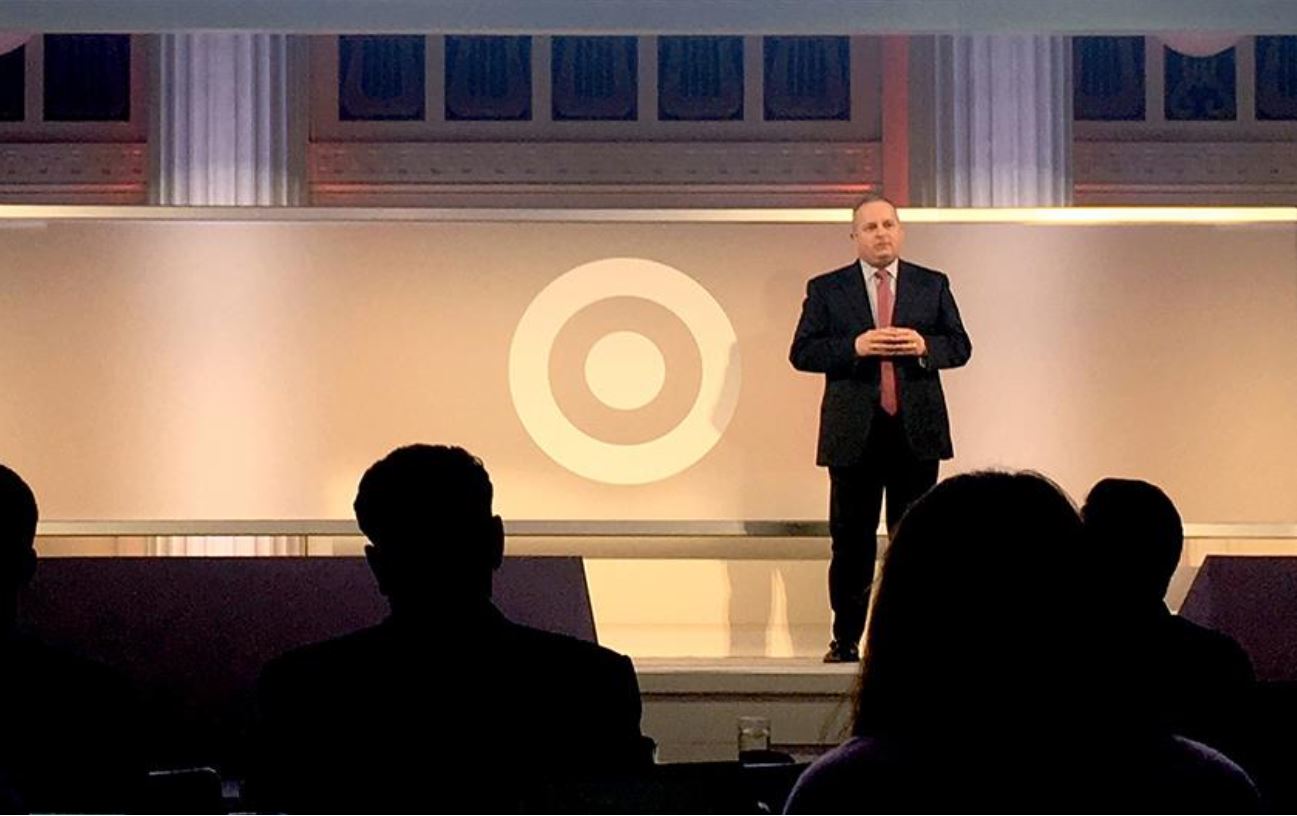
Web Developers
Target held its annual investor meeting on February 28 in New York City. The retailer expects another challenging year in 2017, and forecast a low-single-digit decline in full-year comps and adjusted EPS of $3.80–$4.20, below the $5.32 consensus estimate.
CEO Brian Cornell outlined plans for the company to spend $7 billion over the next three years—and forfeit $1 billion in annual operating profit as it lowers prices and invests in stores—in an effort to recapture long-term, sustainable growth.
This transition will present headwinds to sales and profits in the short term, but is expected to bring profitability to Target over the long term, Cornell said. As a result of these initiatives, Target expects fiscal years 2017 and 2018 to be investment and transition years. The company expects to return to stability and growth in 2019.

Financial Results: 4Q16 and FY16
Target reported revenues of $20.69 billion for 4Q16, down 4.3% and slightly below the $20.70 billion consensus estimate. Total company same-store sales declined by 1.5%, versus analysts’ estimate of a 1.4% decline and the company’s previous guidance of a 1.5%–1.0% decline. Comp sales growth in the company’s signature categories outpaced total comp sales growth by approximately 3 percentage points. Comp traffic increased by 0.2% from the year-ago period. Digital comps grew by 34% year over year and contributed 1.8 percentage points of comp sales growth. The company reported adjusted EPS of $1.45 for the quarter, below the consensus estimate of $1.51 and down 4.6% from $1.52 in the year-ago period. For FY16, Target reported revenues of $69.50 billion, down 5.8% from $73.79 billion in FY15. The company reported adjusted EPS of $5.01 for the full year, 6.7% higher than the $4.69 reported forFY15.Strategic Priorities for Long-Term, Sustainable Growth; Profit Growth Will Not Reverse Until 2019
The major themes of the meeting were the company’s accelerating approach to adapting to customers’ needs and its investment in future growth opportunities.Target is making some major changes in an effort to compete in what Cornell called a “new era of retailing.” The company’s strategic priorities include:- Lowering prices to compete with deep-discounting rivals
- Launching private label brands
- Investing in faster, more profitable delivery of online orders
- Upgrading and remodeling big-box stores
- Accelerating the rollout of small-format stores
Reestablishing Everyday Low Prices
To ensure its prices remain competitive, Target plans to make a significant investment in cutting prices on staples such as food and other household essentials, as opposed to relying on promotions of specific items. The retailer said it plans to reestablish its reputation as a chain where prices are low every day and that it will accept lower gross margins as a result. Price investments will take $1 billion out of the company’s operating margin in 2017, but will better position Target for the long term, Cornell said.Focus on Private Label Brands to Differentiate Its Product
Target announced plans to launch more than 12 new, exclusive brands in the next two years,most of them in its strong core categories of apparel and home goods. The retailer says these will add more than $10 billion in sales over the next two years. Management referenced the success of its Cat & Jack children’s line, which launched last year. The company said the line is on track to generate $1 billion in sales and that it has the potential to be the largest children’s brand in the US. Cornell discussed the importance of storytelling with regard to the company’s new brands. Target also mentioned changes to its grocery division—specifically, it is bringing in more local products, shipping products more frequently and upping its focus on adult beverages. Cornell reiterated that Target is not a full-service grocer, and that it will continue to utilize its food department as a way to get shoppers to add extra items to their baskets and to drive traffic. The retailer will focus brand growth in its high-margin categories: apparel, accessories, footwear and home.
$7 Billion in Capital Expenditure over Three Years
Target will invest $7 billion in capital over the next three years in digital and supply chain operations;renovating 600 existing big-box stores and doubling the number of smaller-format stores (30 are planned in 2017 and 40 per year after that);launching 12 new, exclusive lines;and lowering prices on staple products. In 2017, the company plans to invest $2 billion in analytics and supply chain initiatives and in the opening of small-format stores in urban neighborhoods and college markets.Enhance Supply Chain and Leverage Stores as Fulfillment Centers
Target’s e-commerce business is growing at an accelerating pace.The company plans to continue to invest in its supply chain in order to be able to deliver online orders more quickly and profitably. Target COO John Mulligan said the company’s two biggest challenges are “we are slow and we have too much inventory.” Management noted that three-quarters of all Americans live within about 10 miles of a Target store, and that the company can leverage those store locations as fulfillment centers to help cover the cost of fulfilling digital orders. During the recent holiday period, Target stores fulfilled nearly 67% of Target.com orders, up from 41% in 2015, according to Mulligan.Currently, 1,000 stores serve as shipment hubs for online orders, and by 2019, all stores will have that capacity, he said.Remodeling Store Plans: Elevated Product Presentation and Digital Capabilities
By 2019, Target expects to remodel more than 600 locations. This year, it plans toremodel100 of its big-box stores.The remodeling plans were influenced by the results of the company’s“LA 25”pilot tests, and the changes are expected to lift sales by 2%–4% in each store. The effort will cost more than $3 billion, with each store remodel costing roughly $5–$5.5 million.The remodeling of Super Target locations is expected to cost slightly less than $10–$11 million. Cornell noted that traffic drivers are fundamentally different; he said that guests are looking for inspiration and that they enjoy discovery. To rejuvenate traffic and sales in its established stores, which recorded their third straight quarterly sales decline in the holiday period, Target will roll out new services and enhancements, including:- New entry displays
- Product presentations
- More visual merchandise storytelling
- Improved area for online order pickup
- More space for back rooms for ship-from-store
 Brian Cornell, CEO Target
Brian Cornell, CEO Target